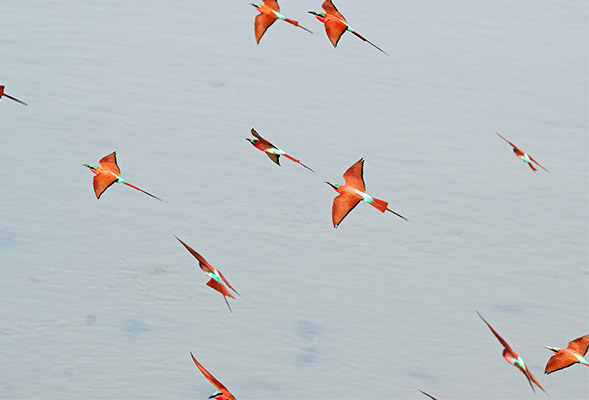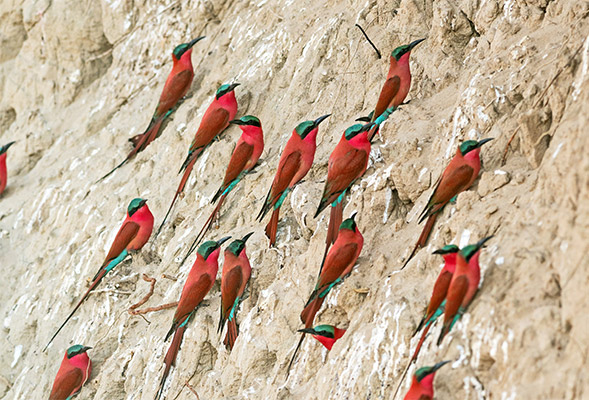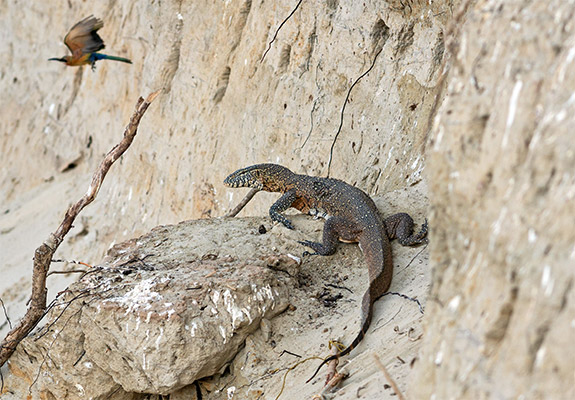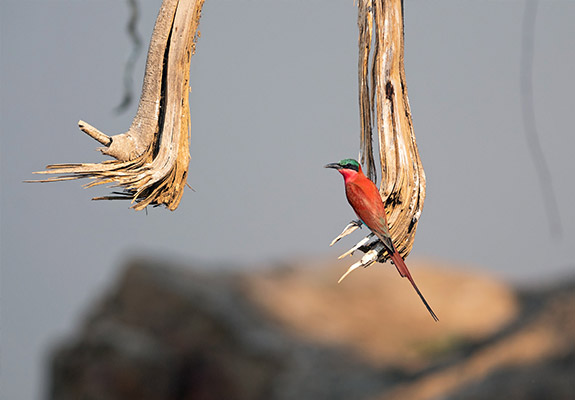One can approach a colony from above on a walking safari. Turn up the volume to hear their vocalizations.
The bird alternate between bouts of rest and restlessness, when all of the adults may sally forth over the river before returning to their cavities.

Then they settle back at the colony.

Within a cavity, each pair will rear typically raise 2-5 young. While they are well-protected, it doesn’t mean that predators aren’t around. I discovered this while watching this colony and noticing that they seemed suddenly upset! You might notice something slithering by at the bottom of the bank in this video:
It was a Nile Monitor lizard!


The sight of these birds is truly arresting and a welcome contrast to the land at the end of the dry season when the landscape is thirsting for colour ahead of the rains. Colony locations can change from year to year with the destruction of old banks during high water season and the creation of new vertical riverbank faces. However, we will be within the correct region for a good chance at approaching a colony of “carmines”! Consider joining our Zambia tour in 2025 for your chance at this quintessential African experience.
The best time to visit Zambia to view this amazing sight is from September through mid-November.
Zambia: Insider’s Africa
November 3 – 14, 2025 | Learn more
November 3 – 14, 2025 | Learn more


